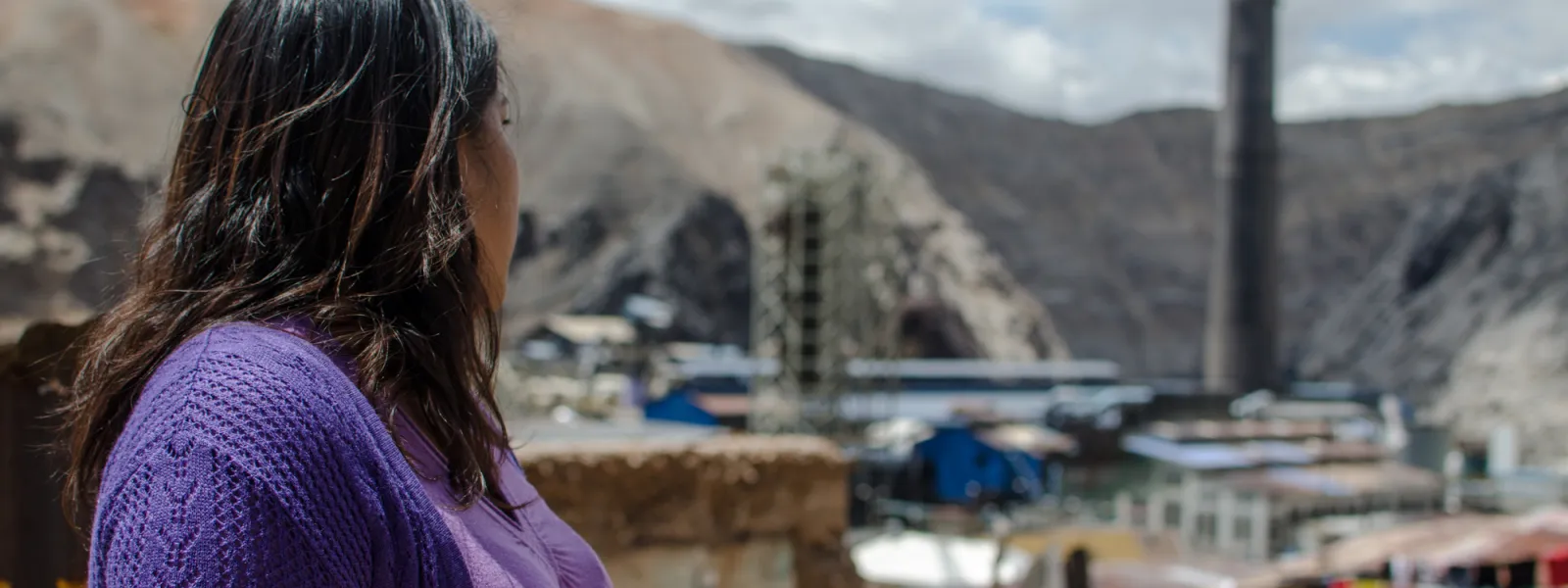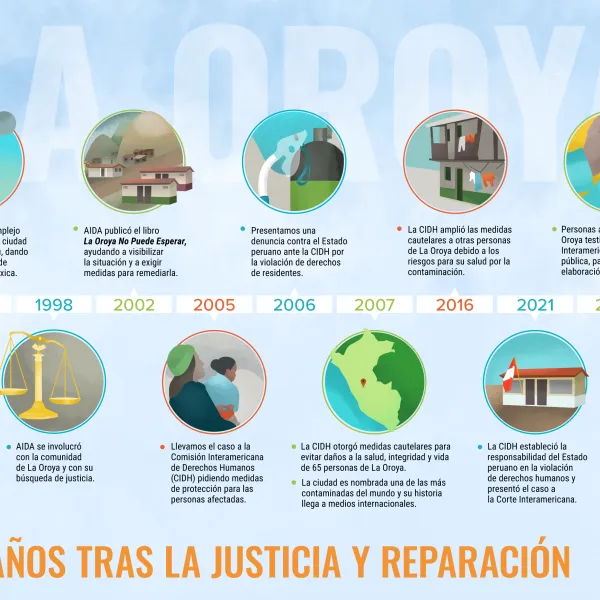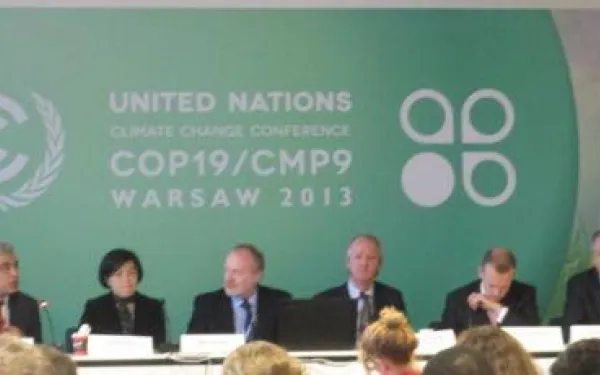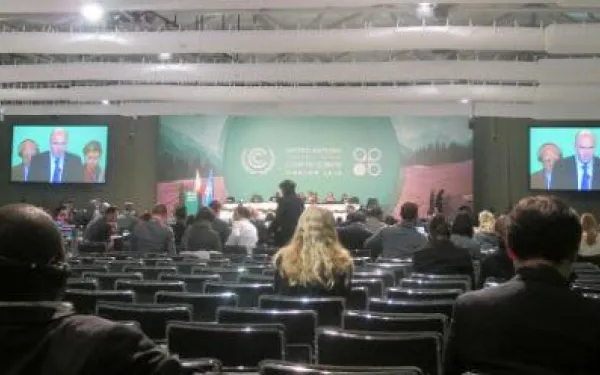
Project
Protecting the health of La Oroya's residents from toxic pollution
For more than 20 years, residents of La Oroya have been seeking justice and reparations after a metallurgical complex caused heavy metal pollution in their community—in violation of their fundamental rights—and the government failed to take adequate measures to protect them.
On March 22, 2024, the Inter-American Court of Human Rights issued its judgment in the case. It found Peru responsible and ordered it to adopt comprehensive reparation measures. This decision is a historic opportunity to restore the rights of the victims, as well as an important precedent for the protection of the right to a healthy environment in Latin America and for adequate state oversight of corporate activities.
Background
La Oroya is a small city in Peru’s central mountain range, in the department of Junín, about 176 km from Lima. It has a population of around 30,000 inhabitants.
There, in 1922, the U.S. company Cerro de Pasco Cooper Corporation installed the La Oroya Metallurgical Complex to process ore concentrates with high levels of lead, copper, zinc, silver and gold, as well as other contaminants such as sulfur, cadmium and arsenic.
The complex was nationalized in 1974 and operated by the State until 1997, when it was acquired by the US Doe Run Company through its subsidiary Doe Run Peru. In 2009, due to the company's financial crisis, the complex's operations were suspended.
Decades of damage to public health
The Peruvian State - due to the lack of adequate control systems, constant supervision, imposition of sanctions and adoption of immediate actions - has allowed the metallurgical complex to generate very high levels of contamination for decades that have seriously affected the health of residents of La Oroya for generations.
Those living in La Oroya have a higher risk or propensity to develop cancer due to historical exposure to heavy metals. While the health effects of toxic contamination are not immediately noticeable, they may be irreversible or become evident over the long term, affecting the population at various levels. Moreover, the impacts have been differentiated —and even more severe— among children, women and the elderly.
Most of the affected people presented lead levels higher than those recommended by the World Health Organization and, in some cases, higher levels of arsenic and cadmium; in addition to stress, anxiety, skin disorders, gastric problems, chronic headaches and respiratory or cardiac problems, among others.
The search for justice
Over time, several actions were brought at the national and international levels to obtain oversight of the metallurgical complex and its impacts, as well as to obtain redress for the violation of the rights of affected people.
AIDA became involved with La Oroya in 1997 and, since then, we’ve employed various strategies to protect public health, the environment and the rights of its inhabitants.
In 2002, our publication La Oroya Cannot Wait helped to make La Oroya's situation visible internationally and demand remedial measures.
That same year, a group of residents of La Oroya filed an enforcement action against the Ministry of Health and the General Directorate of Environmental Health to protect their rights and those of the rest of the population.
In 2006, they obtained a partially favorable decision from the Constitutional Court that ordered protective measures. However, after more than 14 years, no measures were taken to implement the ruling and the highest court did not take action to enforce it.
Given the lack of effective responses at the national level, AIDA —together with an international coalition of organizations— took the case to the Inter-American Commission on Human Rights (IACHR) and in November 2005 requested measures to protect the right to life, personal integrity and health of the people affected. In 2006, we filed a complaint with the IACHR against the Peruvian State for the violation of the human rights of La Oroya residents.
In 2007, in response to the petition, the IACHR granted protection measures to 65 people from La Oroya and in 2016 extended them to another 15.
Current Situation
To date, the protection measures granted by the IACHR are still in effect. Although the State has issued some decisions to somewhat control the company and the levels of contamination in the area, these have not been effective in protecting the rights of the population or in urgently implementing the necessary actions in La Oroya.
Although the levels of lead and other heavy metals in the blood have decreased since the suspension of operations at the complex, this does not imply that the effects of the contamination have disappeared because the metals remain in other parts of the body and their impacts can appear over the years. The State has not carried out a comprehensive diagnosis and follow-up of the people who were highly exposed to heavy metals at La Oroya. There is also a lack of an epidemiological and blood study on children to show the current state of contamination of the population and its comparison with the studies carried out between 1999 and 2005.
The case before the Inter-American Court
As for the international complaint, in October 2021 —15 years after the process began— the IACHR adopted a decision on the merits of the case and submitted it to the Inter-American Court of Human Rights, after establishing the international responsibility of the Peruvian State in the violation of human rights of residents of La Oroya.
The Court heard the case at a public hearing in October 2022. More than a year later, on March 22, 2024, the international court issued its judgment. In its ruling, the first of its kind, it held Peru responsible for violating the rights of the residents of La Oroya and ordered the government to adopt comprehensive reparation measures, including environmental remediation, reduction and mitigation of polluting emissions, air quality monitoring, free and specialized medical care, compensation, and a resettlement plan for the affected people.
Partners:

Related projects
Mexico’s government is held internationally accountable for authorizing tourism infrastructure in the Gulf of California
The Commission for Environmental Cooperation (CEC) called on Mexican authorities to respond by January 8, 2014 to a complaint of breaching environmental legislation in the permits for four mega resorts. Mexico City, Mexico. The Commission for Environmental Cooperation (CEC) requested an explanation from the Mexican government for authorizing tourism projects in the Gulf of California. The international organization, established under the North American Free Trade Agreement, made the determination after reviewing a citizen petition submitted by Mexican and U.S. organizations[i] denouncing the systematic violation of Mexican environmental law in permits for the construction of four mega resorts that put at risk fragile coral reefs, mangroves and wetlands. The Interamerican Association for Environmental Defense (AIDA) and Earthjustice filed the petition[ii] with the CEC in April on behalf of 11 Mexican and international organizations. In the petition, the four resort projects are presented as an example of how Mexico’s Secretariat of Environment and Natural Resources (SEMARNAT) endorsed massive tourism infrastructure in the Gulf of California in violation of norms for environmental impact assessment, the protection of endangered species and the conservation of coastal ecosystems. The CEC Secretariat determined that the Mexican government has until January 8, 2014 to provide a response on why it issued the permits, specifically in relation to these aspects: use of the best available information, assessing the cumulative impacts and destruction of ecosystems, the lack of precautionary and preventive measures, and the omission of the power to suspend works. The CEC also requested information on the implementation of the resolutions and recommendations of the Ramsar Convention, an intergovernmental treaty for the protection of wetlands of international importance like those in the Gulf of California. “It is a breakthrough in national and international law because it recognizes these provisions as part of the implementation of the obligations in the international treaties ratified by Mexico,” said Sandra Moguel, an AIDA legal adviser. The Secretariat acknowledged, in particular, the resolutions adopted by the contracting parties to the Ramsar Convention, which establish standards for the environmental impact assessment and protection of wetlands. The Secretariat also acknowledged the recommendations of the Ramsar Missions that visited the Marismas Nacionales and Cabo Pulmo, concluding that large-scale tourism developments were not appropriate because of the vulnerability of these ecosystems[iii]. It asked Mexico to explain its failure to perform an environmental impact assessment in accordance with these provisions. “The CEC called for accountability from the Mexican government with respect to the abuse of discretion in considering technical reviews, as is the case with the Playa Espíritu project that lacked environmental viability according to the CONANP (National Commission on Protected Areas),” said Eduardo Nájera, director of COSTASALVAjE, one of the petitioning organizations. “It is urgent that the new administration of SEMARNAT doesn’t not make the same mistakes as their predecessors, and that it carry out a transparent and non-arbitrary environmental impact assessment, especially in the case of projects that could put in danger wetlands of priority international importance such as Marismas Nacionales, Cabo Pulmo and the Bahía de la Paz,” said Carlos Eduardo Simental, director of the Ecological Network for the Development of Esquinapa (REDES), another petitioner.Finally, Carolina Herrera, a Latin America specialist for the Natural Resources Defense Council (NRDC), said that she expects that once it receives Mexico’s response, “the CEC will elaborate a detailed investigation of what happened in order to press Mexico to not relax its own environmental protection measures in favor of unsustainable coastal development.” See the CEC determination. [i] Ecological Network for the Development of Esquinapa (REDES), Friends for the Conservation of Cabo Pulmo (ACCP), Mexican Center for Environmental Defense, Natural Resources Defense Council (NRDC), COSTASALVAjE, SUMAR, Niparajá Natural History Society, Los Cabos Coastkeeper, Alliance for the Sustainability of the Northwestern Coast (ALCOSTA), Greenpeace Mexico and AIDA. [ii] For more information about the citizen submission mechanism, please see this link. [iii] These missions are a technical assistance facility of Ramsar whose primary purpose is to assist parties that have wetlands meriting priority attention due to changing ecological characteristics.
Read more
Green financing: Sources, preparation and the allocation of resources
By Andrea Rodríguez, legal advisor, AIDA,@arodriguezosuna, and Mónica Valtierra, AIDA volunteer Warsaw, Poland. The financing needed to fight climate change was a key issue at the side events of the Warsaw Climate Change Conference (COP19). Discussions dug deep into the issues of the sourcing of funds, the preparation to secure financing and how to turn financial support into real solutions. persifying the financial resources of the Green Climate Fund (GCF) The World Business Council for Sustainable Development (WBCSD) and the Climate Markets and Investment Association (CMIA) organized an event to discuss the theme of financial persification and the tools necessary to mobilize GCF funds. Giles Dickson, vice president of environmental policies and global advocacy at the multinational energy and transport conglomerate Alstom, said that for the private sector to provide capital, the GCF needs mechanisms for providing incentives and a framework for making investments through loans. It is important to break the myth that the private sector will use public resources to its own benefit, given that the true intention is to contribute to financial instruments in which the public sector is involved, he said. Jeanne Ng, director of environmental affairs at Hong Kong-based electric company CLP Group, said the private sector already has financed renewable energy projects without public resources. For this reason, she said it is important for the GCF to take into account these efforts and include them within its objectives, and also to make sure that public resources don’t go to projects that already are getting financing. Talking about the inclusion of the private sector in funding GCF investments, Ng said the Fund needs the help of private institutions to market low-carbon products. Vikram Widge, head of climate finance and policy at the International Finance Corp. (IFC), the private sector arm of the World Bank, said the GCF must play a participative role in capitalizing financial resources and generating profits. The financial instruments must guarantee the stability of private resources and the development of countries, he said. Alstom’s Dickson said private sector participation could come through three channels: in projects on the local and municipal level, in promoting new technologies and through the development of projects supported by private companies. This will only happen if governments put in place economic policies that guarantee positive results, he said. Readiness support The question of readiness support was the focus of discussion at another side event called Rolling up the sleeves for the Green Climate Fund: Expectations and experience from building GCF readiness, where representatives from different countries expressed their views: South Africa. Zaheer Fakir, chief policy advisor at South Africa’s Department of Environmental Affairs, said it is important to have a leader country to run the Fund’s projects, some of which are designed for specific environmental problems. There are solutions that cannot be replicated in each country because they rely on the institutional capacity of each country, he said. It’s not just about giving money to national entities. This is because there are concerns of money-laundering and also because some entities already have direct access to financial resources. The funding must go to projects that have the potential for transformation and for which the end goal should not be exclusively limited to the reduction of greenhouse gas emissions, he added. On the same topic, Richard Calland, an associate professor of public law at the University of Cape Town, presented a study on the preparation capacity of each country. It mentioned three indispensible prerequisites: the country must be relative, responsive and reasonable. In identifying the local difficulties in terms of planning, he proposed that each country form financial partnerships with research institutions. This is not about the ability to deploy financial resources, but rather to use the maximum capacity possible, he said. Lastly, on the subject of access of financial resources, he called on people to consider the possible modalities, fiduciary standards and safeguards. Germany. Norbert Gorben mentioned that Germany is considering the possibility next year of participating in the GCF and contributing to it 14 billion Euros through bilateral schemes and multilateral organizations. He said the Fund’s board should ask the GCF Secretariat to begin action on implementing programs and mobilizing resources as soon as possible. Ina von Frantzius, a policy advisor on climate policy and financing at the Federal Ministry for Economic Cooperation and Development, said Germany wants to offer specific help to each country that needs it. Peru. Gabriel Quijandria, vice minister of the strategic development of natural resources at the Ministry of the Environment, said that together with the Ministry of Finance he is working on a program to modernize the state. The two ministries have discussed establishing a national body charged with implementing and managing the country’s funds once the GCF starts to operate. The preparation for the program, he said, was not an easy concept to fathom, but one that requires the right attitude. In order to define the program, it is necessary to understand and pay attention to the perspective of poor communities, he said. As an example, he cited farmers who take out international insurance against the effects of climate phenomena such as El Niño. The allocation of resources The financing of projects by the Global South to countries in the Global South is a growing trend in the developing world. In most cases, the resources come from the private sector in these countries and are funneled to projects related to public policy. This issue was addressed at another side event at the COP19 in Warsaw called Developing Countries in the Driving Seat for Accelerating Green Finance. On this topic, Monique Barbut, head of the United Nations Convention to Combat Desertification (UNCCD), said the priority is to know exactly where the money goes. Some 60% of the financial resources for climate projects come from the private sector, with a large part of this money going toward renewable energy projects. This is not yet enough to combat climate change. Approximately 48% of government funds are allocated to adaptation projects related to sustainable use of the land, she said. On the importance of resource allocation, she clarified that this depends on the generation of social benefits. Funding sustainability projects can lead to less migration, poverty and insecurity for vulnerable communities, she explained. Zaheer Fakir, the representative of the South African government, also spoke about leadership. In his opinion, countries in the Global South are more interested in doing more to combat climate change than the countries in the Global North, and so they are more open to the idea of offering their money to help. “We cannot sit and wait for the multilateral process to be agreed upon” because it is now when countries are suffering extreme poverty, unemployment, uneducated youth and other problems that impel us to go home and do something about it rather than wait around. “How can we improve the lives of our citizens at home?” asked Fakir. It is a question of “being green,” of involving communities, indigenous groups and all levels of society in green projects, he said. More than the source of funding , it is important that money is invested in the adequate technology for resolving climactic problems in a country, said Nick Beglinger, president of Zurich-based clean technology business association Swisscleantech. Businesses can make money while also helping the environment, he said. He added that it is also necessary to start innovating in green finance. He suggested reviewing the use of the public money in pension funds in order to reach the common goals of the government and society, because pensioners are the ideal investors for long-term plans. On this issue, there is not much difference between developed and developing countries, he said, adding that the pisions between the Global South and North should be eliminated in order for the financing mechanisms to function in an efficient way regardless of the origin of the funds.
Read more
Climate change funding: Needs and expectations
By Andrea Rodríguez, legal advisor, AIDA, @arodriguezosuna, and Mónica Valtierra, AIDA volunteer Warsaw, Poland. In the discussions about the financial resources needed to tackle climate change, the plenary session of the Conference of the Parties (COP 19) in Warsaw focused on three topics: long-term financing, a report by the Standing Committee on Finance, and another report of the Green Climate Fund (GCF) of the COP. Long-term financing The Philippines. The Philippine representative said long-term financing is crucialfor developing countries and that the outcome of the agreements reached in 2015 will depend on how far those countries are willing to go to see them through. He said: “There needs to be clarity on the specific amount [of resources required] and which projects will receive the finances. But until now the situation can only be described as disastrous.” Egypt. The Egyptian delegate, on behalf of an African group of nations, said: “The agreements will depend on the climate fund’s progress in realizing its goals, the ability of countries to keep the global temperature from rising at less than 2°C this century, and mobilizing US$100 billion. These are the urgent issues. European Union. The EU reaffirmed its commitment to mobilize climate change finances with the expectation that the Green Climate Fund will increase its funding in the area of adaptation. Malpes. The Malpes’ delegate spoke about the need to strike a balance between the funding granted for global warming mitigation and what is put toward climate change adaptation. It is an essential issue for developing countries, he said. Colombia. Colombia’s delegate called for continued efforts to secure climate change funding because up until now there has been very little action taken in this regard. The commitment of US$100 billion in funding for climate change mitigation and adaptation is another a pressing task, he added. The Standing Committee report The Philippines. The Standing Committee has a great deal of work to do, especially with regard to the issues of transparency and access to information, the delegate said on behalf of the G77. “We need to strengthen the mechanisms in place for monitoring, verification and reporting purposes before 2015,” and fully address the issue of additional financing, he said. Egypt. Along the same vein of the Philippines, this delegation emphasized the urgent need to provide support for the verification, monitoring and reporting mechanisms. Bolivia. The Bolivian delegate spoke about access to funds, which he said is “the cornerstone of addressing the impact of climate change.” It requires the support of all countries, he added. Green Climate Fund (GCF) report to the COP The co-chairs of the GCF said the organization must be ambitious and have ever-increasing efforts. They repeated earlier calls to strike a balance between the funds put toward mitigation and adaptation to climate change, and to mobilize financial resources before mid-2014. On this topic, the countries said the following: The Philippines. There are high expectations for the GCF, said the delegate. But three years after the COP meeting in Cancun, Mexico, it is time to start moving the money. Egypt. The mobilization of funds should be optimized as soon as possible and the Fund must concentrate on sustainable financing for climate change, this delegation said. India. According to this delegation, the agreements to be reached in 2015 depend on the climate funding that exists at that time. He reiterated the idea of finding an equilibrium between the resources for mitigation and adaptation of the Fund. Zambia. “Fifty percent of the funds should be put toward adaptation measures,” which will also support programs set up to reduce poverty in vulnerable groups, said the Zambian delegate. Malpes. On the importance of mobilizing financial resources promptly, this delegate called for the funds to be available before the COP 20 in Lima. Uganda. This delegate reminded the audience that climate change is not waiting for the mobilization of resources to begin.
Read more